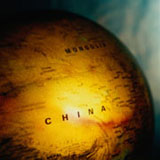Twenty years ago it was widely believed that companies that wanted to source products from China were best off focusing on simple, labor intensive products such as shoes, toys and clothes. That was true – and it helped drive tremendous success for companies such as Perry Ellis, which targeted these product categories. Today, however, the sourcing landscape in China has changed. High-tech companies such as Dell, IBM, Philips, Samsung and Nokia are turning to China to source parts and products that demand sophisticated technology and considerable R&D. According to experts at The Boston Consulting Group and Wharton, companies that figure out how to take advantage of this trend can reap enormous rewards.
“Sourcing in China started with low-tech products but it has evolved beyond that,” says Jim Hemerling, a senior vice president in The Boston Consulting Group’s Shanghai office. “Now, in addition to traditional products, another huge area is consumer electronics. I believe the next big wave will be industrial goods, with companies like ITT, Siemens, Honeywell and ABB leading the way.”
Statistics about China’s export trade show that Hemerling has a point. According to figures announced in January this year by the Beijing-based Ministry of Commerce, China’s exports surged 35% last year to reach $593.4 billion. Technology exports have begun to command a growing share of these exports: They accounted for 27% in 2004, compared with 23% in 2003. According to a Bloomberg report, exports of technology products rose 72% to $45.4 billion.
The fact that companies are starting to focus on sourcing high-tech, research-intensive products from China does not imply, however, that demand for traditional products is dead. Take Wal-Mart, for example. The retailing giant, which rose to the top of the Fortune 500 list three years ago and had net sales of $256 billion in fiscal 2004, is still sourcing lots of traditional products from China. In fact, it has become the largest single company to procure goods from that country, sourcing products worth a staggering $15 billion in 2003.
Miami-based Perry Ellis International, which designs and sells apparel, is another company that has been proactive about sourcing purchases from China. It set up shop in China in 1976 and has since opened four offices there and employs about 60 people in the country to manage relationships with local manufacturers. George Feldenkreis, the chairman and chief executive, notes that his company, which has annual sales of about $500 million, makes 28% of its purchases in China. “This number keeps growing and will continue to grow as the U.S. removes all of the apparel quotas,” says Feldenkreis, who spoke at the Wharton School’s China Business Forum in 2004. “China is the largest textile producer in the world, and it’s becoming the largest fiber and yarn producer. So manufacturers can buy supplies at prices that are the same or lower than those in any other country in the world. And the labor cost is among the lowest in the world, while productivity is among the highest.”
As the experiences of giants such as Wal-Mart and relatively smaller firms like Perry Ellis show, that combination — low costs and high productivity — means that sourcing from China isn’t a choice any more for many multinationals. It’s a necessity. Whether it involves high-tech or labor-intensive goods, China enjoys advantages that many other countries can’t match. While U.S. workers, for example, may be more productive and technologically sophisticated, they are also more expensive. Likewise, people in places such as the Dominican Republic and Romania may be willing to work just as cheaply as workers in China, but they are not as productive.
The apparel industry isn’t the only one that has begun to rely on China for its sourcing requirements. Some 95% of toys sold in the U.S. and 85% of shoes are made in China, Feldenkreis reckons. The question therefore for many multinationals in the U.S. and Europe isn’t whether to source goods from China or when — the answer to that one is as soon as possible — but how.
China, of course, isn’t without challenges for international companies that want to do business there. In some ways, it has become a victim of its own success. Its rapid growth — some estimates say its gross domestic product has jumped by more than 10% a year for the last decade — has begun to create shortages for a host of manufacturing inputs, including, most critically, electricity, and to strain its fledgling logistics network.
Even so, China’s cost advantages are so hefty that they are likely to endure for at least a decade, perhaps longer. “You start with a labor rate in China that is a fraction of the West’s – 1/20th or 1/30th in the case of Germany,” says Hemerling. “Our view is that the low-cost advantage is sustainable for a long, long time. In China, you have a huge pool of rural workers who aren’t yet in the industrial workforce.” This supply of workers should serve to curb wage inflation.
Thomas Bradtke, a manager in BCG’s Boston office, calls China’s supply of labor “almost infinite.” He points out that 70% of China’s population of 1.3 billion people, or more than 900 million people, is rural. “As agricultural productivity goes up, these people will be freed. Everybody in China wants to move to the cities and improve their standard of living. This influx will keep the supply of workers large.”
In addition, Chinese manufacturers are becoming more experienced and sophisticated. As they master new techniques and technologies, they are able to produce higher-end goods. That has already happened in the furniture industry. In the early 1990s, many American furniture makers believed that, even though China had made inroads into the low-end of the market, it wouldn’t succeed with premium products, which demand higher grades of workmanship and finish. Now, Chinese manufacturers are making this sort of furniture, too. Marshall Meyer, a Wharton professor of management, recalls visiting a piano factory during one of his recent trips to China. “Ten years ago, it was nearly bankrupt, and now it has two-thirds of the Chinese market,” he says. “In terms of units, it could soon be the largest instrument maker in the world.”
China’s Cost Advantage
China’s advantage over western suppliers does not just stem from low labor costs. Other necessities for commerce — land, buildings and machinery — are less expensive, too. “Everything is cheaper in China,” Bradtke says. “If you set up a metal-processing plant or textile plant, the investment required is a lot lower than for equivalent facilities in the West — anywhere from 20% to 80% less,” he notes. “And if you use local machinery — say, a metal-stamping press made in China — your supplier passes on his cost advantage. It is 30% to 40% cheaper than what you might get from a U.S. or Japanese manufacturer.” Constructing an aluminum smelter, which could cost $1 billion to $2 billion in the U.S., costs half that in China, he estimates.
Because wages are low, companies can deploy workers where, in the West, they might have opted for machines. Take packaging, which in the U.S. and Europe is typically done mechanically. “In China, you might go back to a formula from the 1960s, buy some basic equipment and have 30 or 40 people wrapping by hand,” Bradtke says. This factor can create challenging situations for international managers, forcing them in effect to re-learn labor-intensive production techniques that are already obsolete in the West, but which are necessary to keep costs competitive in China.
Before jumping on the China bandwagon, companies must thoroughly analyze the risks as well as the rewards. A BCG report, “Capturing Global Advantage — How Leading Industrial Companies Are Transforming their Industries by Sourcing and Selling in China, India and Other Low-Cost Countries,” details the myriad factors that a firm must weigh.
Western multinationals must understand that, though they will eventually save money in the long run, they can face big startup costs as they begin sourcing in China, the report points out. Carrier, a maker of air conditioners, collected more than 1,000 quotes before making its first order in China. Perry Ellis, for its part, routinely considers dozens of factories before picking one as a supplier. Once vendors are hired, they have to be monitored assiduously. “Companies will often think they can manage their suppliers from the U.S.,” says BCG’s Hemerling. “But you have to bring senior people and put them on the ground in China. You can’t do this remotely. Until your manufacturing and purchasing folks and engineers have been here, they are not going to embrace the opportunity.”
Power Struggles
Sourcing from China also means exposing a company’s supply chain to disruptions that are uncommon in the West. “Electricity is a huge problem in China right now. You have chronic shortages,” explains Z. John Zhang, a Wharton marketing professor. “When it is crunch time, it is not certain that your supplier is going to have power. So things may not run as smoothly in China.”
China’s economy has grown faster than its electrical grid and generation capacity, so demand for electricity has outstripped supply. The government is working to bring more generation capacity online, and the problem should be resolved within a few years. Until then, though, foreign multinationals should investigate the local energy situation — some areas have been especially hard hit by blackouts — when picking suppliers. In response, a few manufacturers even have begun constructing supplemental generators.
Another risk is China’s lax enforcement of laws protecting intellectual property. Simply put, copying is rampant. And while a copycat probably would be unable to export knockoff products, such goods could be sold into the Chinese domestic market, which is huge and growing. Western multinationals, therefore, need to be careful about which technologies they share with their Chinese suppliers, say BCG experts. If a technology is especially crucial to a company’s mission, it might best be kept in-house, even if production occurs in China.
Feldenkreis of Perry Ellis acknowledges the challenges of sourcing from China but has no regrets about his decision to do so and would urge other executives to do the same. “The sooner you go the better, because the future is Asia. This is the century of the Pacific Rim, and I include the U.S. in that. That’s where the world activity is going to be.”


